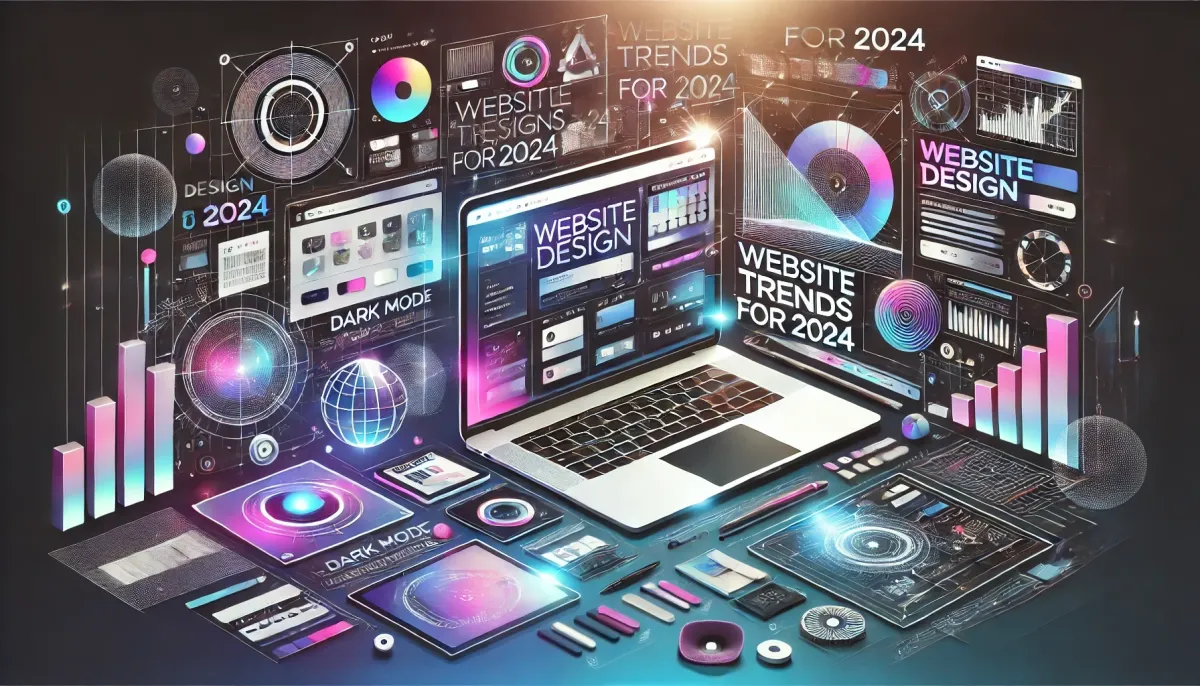Website Design Trends for 2024: Revolutionizing Visual Experience and Functional Enhancements

Website Design Trends for 2024
Revolutionizing Visual Experience
Immersive 3D Elements
The incorporation of 3D elements in websites is drastically transforming the way users interact with online content. This trend adds depth and realism, whether through interactive product models or animated graphics. This immersive approach not only captivates the user's attention but also enhances the overall user experience by providing a more compelling and engaging visual representation.

The Popularity of Dark Mode
Dark mode has gained widespread acceptance and is no longer just a fleeting trend. Recognized for its benefits in reducing eye strain and conserving battery life on mobile devices, it has become a standard feature for modern websites. Users now expect a seamless dark mode experience, and incorporating it can improve both usability and aesthetic appeal.
Diverse Aesthetic Approaches
Minimalism with a Twist
While minimalism continues to dominate web design, it has been revamped to include vibrant color palettes, distinct typeface choices, and dynamic elements. This approach maintains a clean and spacious look but introduces visual interest, keeping websites sleek yet engaging. The balance of minimalism and dynamic elements ensures that websites are both contemporary and user-friendly.
The Rise of Maximalism
In contrast to minimalist designs, maximalism embraces a more-is-more philosophy. This trend features bold elements such as loud macro photography, dopamine colors, and expressive typography. It offers a strong visual identity that is particularly appealing to consumer goods and emerging brands looking to make a memorable impact. Maximalism ensures that websites leave a lasting impression on visitors.
Functional Enhancements and User Experience
Advanced Interactivity and AI-Driven Personalization
Enhanced interactivity features like parallax scrolling, micro-interactions, and micro-animations are becoming pivotal in engaging users. Complementing these interactive elements, AI-driven personalization is now a key strategy. By analyzing user behavior and preferences, AI tailors content, layout, and recommendations in real-time, creating a customized and enhanced user experience.
Inclusivity and Digital Sustainability
The importance of inclusive design cannot be overstated. Websites are being designed with accessibility in mind, ensuring they are usable by everyone regardless of their abilities. This includes proper screen reader integration, alternative text for images, and keyboard navigation. Additionally, digital sustainability practices are gaining traction. Designers are now focusing on creating energy-efficient and environmentally friendly websites, reducing the digital carbon footprint.
These trends underscore the dynamic and evolving landscape of web design in 2024, blending aesthetic innovation with functional enhancements to create compelling and user-centric digital experiences.

